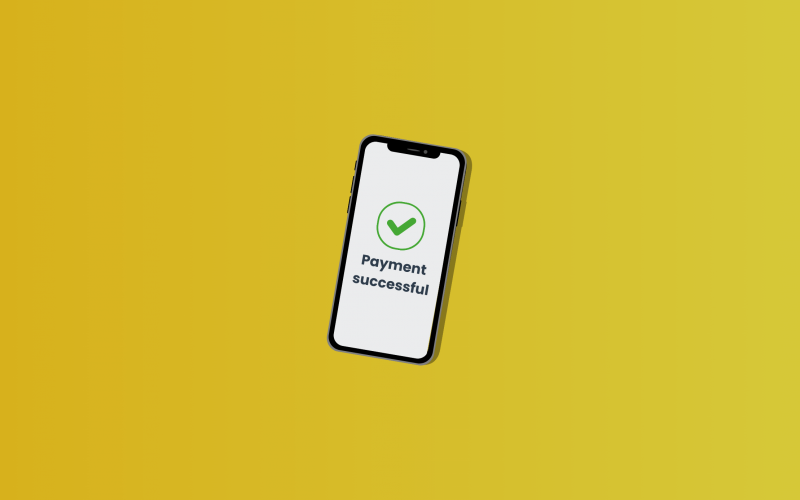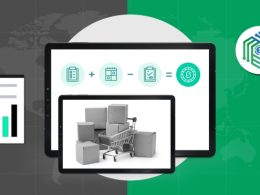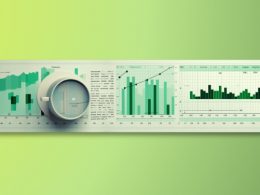Time is money for any business. Every minute spent on administrative tasks is a minute not spent on growing your business. Have you ever tried counting how long it would take you to create just one paper invoice? It could take about half an hour! As with manual invoicing, there’s so much attention to detail and calculations, and one is likely to make an error.
How do you ensure you always get paid on time and manage your invoices easily? What can be done to automate the process and free time for more pressing administrative tasks? The solution is to use online invoicing.
Now, let’s have a look at how online invoicing can help small businesses deal with invoice payment management.
Key takeaways:
- For an invoice to be valid, it must include: purchased items, prices, total cost, taxes, customer info, transaction date, and payment terms.
- An invoice requests payment after a sale, while a sales receipt confirms payment has been made.
- There are three main types of invoicing: manual, e-invoicing, and online invoicing.
- Online invoicing improves cash flow management, reduces manual work, minimizes errors, and facilitates global operations.
Hop on reading to learn more about online invoicing for small businesses:
- What are the essential components of an invoice?
- Invoice vs. sales receipt
- What’s the role of invoices in the Accounts Payable cycle?
2. Different types of invoicing
3. Challenges of small business invoicing
4. How Synder helps with small business invoicing
5. Wrapping up
6. FAQs
What are invoices?
An invoice is a legal document that requests payment for goods or services a business provides and can be used to enforce payment and settle disputes.
Being a legal document means that an invoice:
- Shows that a transaction took place and that payment is due.
- If there’s a disagreement, it can be used in court to claim unpaid amounts.
What are the essential components of an invoice?

An invoice needs to include certain key details to be valid. While the exact requirements can vary, these are the essentials:
- the items purchased,
- the amount of every item and its price,
- the total cost of the purchase,
- any applicable taxes,
- the customer’s information,
- the transaction date,
- the payment terms.
Note: Failing to include these critical pieces of information can render the invoice invalid or non-compliant with legal requirements.
Invoice vs. sales receipt
Even though invoices and sales receipts have different purposes, they’re often mixed up. Let’s figure out how not to get confused.
| Aspect | Invoice | Sales receipt |
| Purpose | To request payment, sent after goods or services are delivered. | To confirm payment, given after the buyer has paid. |
| Function | Acts as a bill the buyer needs to pay by a specific date. | Serves as proof that the transaction is complete. |
| Legal standing | Can be used to enforce payment if necessary. | Shows that the buyer has fulfilled their payment obligation. |
In short, a sales receipt is proof of payment given right when you pay. An invoice means “you owe money,” while a receipt means “you’ve paid.”
Do all businesses need to use invoices?
The short answer would be: No. Not all businesses are required to use invoices, but most find them very useful because they:
- Show who owes money and who has paid.
- Confirm you’re organized and serious.
- Keep income records for taxes.
- Help build good customer relationships.
- Make the billing process easier.
What’s the role of invoices in the Accounts Payable cycle?
Invoices play a major role in the Accounts Payable cycle as they track what a business owes to its suppliers. What are the phases of this cycle?
- The company gets an invoice for goods or services received.
- They check the invoice against the purchase order and goods received.
- Once verified, the invoice is approved.
- The approved invoice is added to the payment system.
- The company pays the invoice according to the agreed terms.
So, invoices help businesses manage and track their expenses efficiently.
Now that we’ve discussed various nuances of invoices, let’s examine different types of invoicing.
Different types of invoicing
Today, businesses mostly use three basic types of invoicing:

Type 1: Manual or paper invoicing
Paper invoicing means creating invoices by hand, printing them, and mailing them to customers. Customers then pay by cheque or bank transfer. It’s the traditional way that small businesses often use, but it’s complicated because:
- You pay someone to manually create and check the invoices.
- Paper invoices take longer to process, and bank transfers can take days, which affects cash flow.
- Manual work can lead to mistakes, causing delays if you need to correct and resend invoices.
Nowadays, invoicing software can cut these costs and reduce errors, so it’s worth reconsidering sticking to paper invoices.
Type 2: E-invoicing
E-invoicing means sending invoices digitally instead of on paper. Here are a few highlights:
- Invoices are created and sent electronically.
- Customers can directly import them into their systems.
- They can even have an image area for specifics.
- It works best if both parties have compatible invoicing systems, especially with big businesses.
Type 3: Online invoicing
Online invoicing is when you create and send invoices using an internet-based platform. Unlike e-invoicing, which involves specific digital formats and system compatibility, online invoicing is simpler and more flexible:
- All you need to do is just log into a website or app, create your invoice, and email it to your customer.
- It’s easy to use and doesn’t require special software.
- It helps you get paid faster by streamlining the process.
Additionally, online invoicing platforms often come with features like:
- payment tracking,
- automatic reminders for overdue payments,
- integration with accounting software.
All this further simplifies the invoicing process and improves cash flow management. Switching to online invoicing can really help your small business.
Here’s a quick comparison of the three main types of invoicing methods used by businesses today:

Challenges of small business invoicing
Let’s look at the most typical issues small businesses might face.

Challenge #1. Handling unreceived invoices
Invoices can get lost, whether sent by mail or email. They might end up at the wrong address or in a spam box. You might not notice a missing invoice until it’s overdue, or a customer may contact you confused about how to pay for received goods.
Challenge #2. Failing to provide accurate invoice information
To ensure your invoices are paid without hold-ups, they must contain all the necessary information. Inaccuracies might happen, especially with manual invoicing. Missing or incorrect information (like payment due dates or purchase order references) can delay payments and hurt customer relationships.
Challenge #3. Dealing with recurring invoices
Recurring invoices for regular services can be time-consuming. As your customer base grows, managing these invoices becomes more complex, potentially messing up your books and impacting cash flow.
Challenge #4. Overdue invoices
It’s tough to keep track of timely payments, especially with long payment terms. Customers might forget, lose, or not receive an invoice. You need a system to check due payments and remind customers, so you’re not stuck with unpaid invoices.
The aftermaths of poor invoice management
Cash flow keeps a business alive, provided it’s positive and well-managed. However, managing cash flow can cause a headache for small business owners.
Results from Versapay research suggest that the average mid- to upper-midsized company sees at least a quarter of its invoices delayed each month, and 6% of these companies report over 75% of their invoices delayed. The waiting time these companies are experiencing means that they’re losing at least $909,506 a month.
That hurts!
At this point, good invoicing habits are highly recommended for running a business because the cost of not having them can be high. Now, we’ll examine the potential consequences of poor invoicing management:
- Errors or delays mess up cash flow.
- Messy invoices upset customers.
- Bad follow-up means late payments.
- Mistakes can lead to legal trouble.
- It’s hard to track finances accurately.
- Frequent errors hurt your reputation.
- You waste time and money.
- You lose an opportunity to upsell.
That’s why finding an accounting solution to manage taxes proactively is essential. It can streamline tax-related tasks and minimize the time spent on compliance.
Next, let’s talk about how Synder accounting software can help. It connects over 30+ ecommerce platforms with QuickBooks, Xero, and Sage Intacct. It records transactions on an accrual basis, keeps your records accurate, and makes reconciliation easy. Moreover, it helps remind customers about outstanding payments, so nothing gets forgotten.
Keep reading to find out more.
How Synder helps with small business invoicing
Synder syncs financial transactions to QuickBooks and handles invoicing. Synder can help small businesses with invoicing by:
- Creating invoices and sending them to customers.
- Monitoring which invoices are paid and which are overdue.
- Sending reminders for outstanding payments to improve cash flow.
- Receiving payments through payment links.
Let’s dive deeper into how Synder can solve common invoicing problems for small businesses.

1. Invoicing automation
If you use QuickBooks Online and Stripe/Square and are looking for invoicing automation, you can integrate them with Synder. The software pulls info from QuickBooks to create invoices, eliminating the need for manual entry. This allows you to receive payments directly through Synder and keep your books updated in real-time.
When you create an invoice in QuickBooks, it syncs across all systems, and your customers receive a payment link. Once you’re paid, Synder automatically updates your books.
Note: You can send one-time or recurring invoices (weekly, monthly, or yearly), simplifying invoicing and consolidating all your customer communications in one place.
Check out our short video to see how it works.
2. Ready-made templates
Synder’s ready-made invoice templates simplify invoicing. Just fill out the fields on the template and customize the layout to suit your preferences. You can adjust the font and colors, and add or remove content, including images.
3. Customizable invoices: Personalized Stripe and Square invoices
Want more personalization? Synder’s accounting tool allows you to customize your Stripe and Square invoices to match your brand. You can easily edit the content of the invoice email and add your business logo so that each invoice sent will feature it.
You can also add additional fields, like thank-you notes turning your invoices into additional channels of customer retention. These customizations keep your invoices professional and boost your brand every time you send one.
Note: Synder Invoicing feature works only for QuickBooks Online with Stripe and Square as payment methods.
4. Payment links to facilitate invoice payments
Synder lets businesses create payment links that they can share through email, websites, or social media platforms.
For example, if you’re promoting products on Instagram, you can simply add a payment link to your profile, giving customers an easy way to pay with their credit cards.
5. Automated application of payments to open invoices

Tracking payments and manually updating finance records is one of the biggest challenges in invoice bookkeeping. And having accounting apps is just essential. Synder can automate the following tasks:
- Syncing transactions from your payment systems to your books.
- Identifying and applying payments to open invoices.
- Closing them automatically in your accounting records.
This way, you won’t need to go through all your received payments, compare them to open invoices, and close those manually. Synder doesn’t just stop there – the tool ensures a perfect match based on customer name and date and prioritizes older invoices first. This saves you tons of time and skyrockets the accuracy of your books.
Ready to experience the magic for yourself? Learn more about how Synder can help you track online invoices by visiting our Weekly Public Demo or sign up for a free 15-day trial and explore Synder yourself. Take the stress out of invoicing with Synder!
6. Custom notifications of due payments and overdue invoices
Synder allows you to track invoice payment due dates and send friendly reminder emails to customers a few days before payments are due. You can also notify customers and yourself about overdue invoices.
Are you curious about how it works? This video will show you the process of setting up invoice payment reminders after the due date.
Check how to set up invoice payment reminders before the due date.
Wrapping up
Switching to online invoicing can make a huge difference for your small business. It’s faster, easier, and helps you get paid on time without the trouble of managing paper invoices. Solutions like Synder automate much of the work for you, reducing mistakes and keeping everything organized.
This change isn’t just about going digital—it’s about making your business run more smoothly. You’ll spend less time on paperwork and more time focusing on growth and customer service.
If you’re still using traditional invoicing methods, now is a great time to try online invoicing. It can make managing your business much simpler and less stressful.
We’re all ears! If you’re already using online invoicing for your small business, how’s it been working out for you? We’d love to hear how it’s affecting your cash flow. Feel free to share your thoughts and questions with us.
FAQs
1. What’s Synder?
Synder is an accounting app that easily transfers financial data from ecommerce platforms like Stripe, and Shopify to accounting systems such as QuickBooks, Sage Intacct, and Xero. With automatic or manual sync options, it manages every transaction detail including product, amount, date, customer, and shipping info, for you to close accounting periods with maximum accuracy. When you connect Synder, it allows you to attach payments to open invoices, avoid duplicates, set up tax preferences, choose preferred locations for transactions, and more.
2. Does Synder provide reporting features to track business analytics?
“Synder Insights” feature offers instantly generated reports based on data captured from connected ecommerce platforms and payment gateways. These reports provide valuable insights into sales, customer behavior, product performance, payment processing fees, and more. As a result, ecommerce businesses can make informed decisions based on accurate data, and manage and grow their business effectively.
3. What payment methods can my customers use to pay Square Invoices?
Customers can pay Square Invoices using major credit cards, debit cards, Apple Pay, Google Pay, and ACH bank transfers (depending on your settings and location).
4. Is free invoicing software safe to use?
Yes, many free invoicing software options are safe and secure. However, you must be cautious and do your research. Choose reputable providers that use encryption and have strong security measures in place.
5. Is an electronic invoice legally valid?
Yes, electronic invoices are legally valid in many countries, provided they meet certain criteria such as authenticity, integrity, and legibility. Specific regulations may vary by jurisdiction.
6. How does an invoice generator simplify invoicing?
Invoice generator is a computer program that assists in preparing invoices and can be handy for businesses. It makes invoicing easier in a way that for instance, you can input some details such as the name of the client, services offered and the cost among others and it will automatically create a professional-looking invoice for you.

.png)





Hola! I’ve been reading your website for a while now and finally got the bravery to go ahead and give you a shout out from Humble TX! Just wanted to say keep up the excellent job!
Thanks for commenting, Helena!